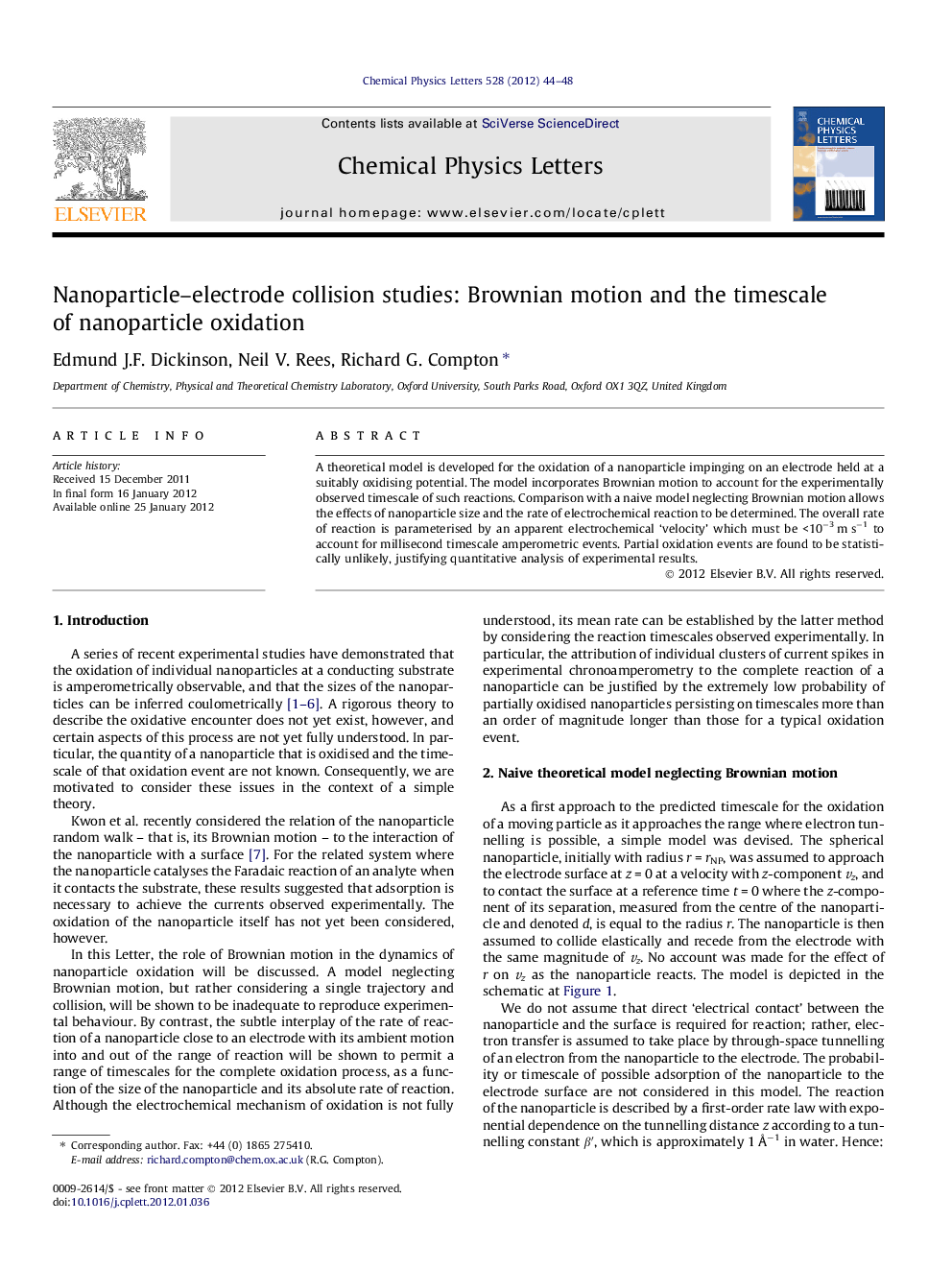| Article ID | Journal | Published Year | Pages | File Type |
|---|---|---|---|---|
| 5383560 | Chemical Physics Letters | 2012 | 5 Pages |
Abstract
⺠A simple theory including Brownian motion is used to model nanoparticle oxidation. ⺠Brownian motion is essential to explaining the experimental timescale of reaction. ⺠The timescale for oxidation events depends on the rate of reaction. ⺠Partial oxidations are unlikely, justifying past analysis of experiments.
Related Topics
Physical Sciences and Engineering
Chemistry
Physical and Theoretical Chemistry
Authors
Edmund J.F. Dickinson, Neil V. Rees, Richard G. Compton,
